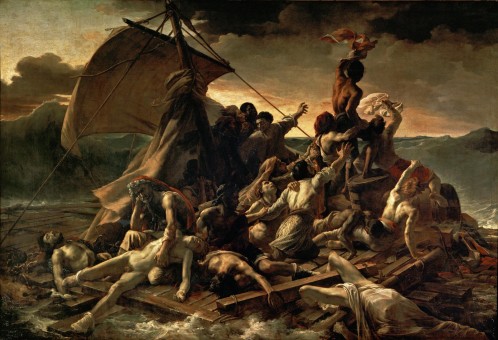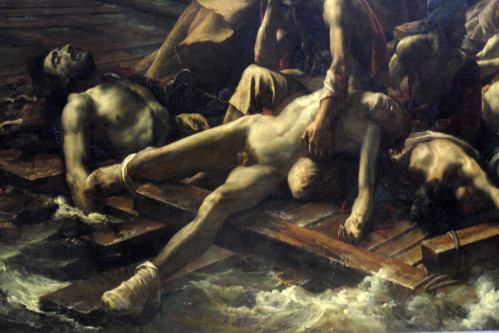Théodore Géricault
The Raft of the Medusa
Masterpiece Series
After Klimt’s Beethoven Frieze and Vermeer’s Milkmeid, this week Wertical magazine has the pleasure to analyze Théodore Géricault’s famous ‘Radeau de la Méduse’.
1. The Raft of the Medusa represents the seeking of a boat entitled ‘Méduse’ on the Mauritania coast
2. It relates a real story that happened on the 2nd July 1816
3. Several people passed away on the boat for cause of of dehydration, madness and cannibalism
4. The painting is a masterpiece of ‘Romanticism’
5. To be exactly precise in his depiction, Géricault studied dead bodies in hospital and morgues
6. Was the masterpiece of the 1819 Salon
7. The radeau de la Méduse was exhibited in London and Irland in 1820 and 1821
8. It was bought by the Louvre in 1824 for 6 000 French Francs, place where it can still be contemplated nowadays.
9. It inspired the sea depiction of Turner, Courbet and Delacroix
10. The iconic painting was referred in numerous works such as L’Assommoir of Emile Zola, Tintin’s Adventures or in ‘Les Mots’ interpreted by Seal.

Théodore Géricault, The raft of the Medusa, 1818–1819, Oil on canvas, 491 cm × 716 cm (16′ 1″ × 23′ 6″ )

Théodore Géricault, The raft of the Medusa, detail of the left corner, 1818–1819, Oil on canvas, 491 cm × 716 cm (16′ 1″ × 23′ 6″ )

Théodore Géricault, Study for le Radeau de La Méduse, ink, 17,6 cm × 24,5 cm
Archive
- Dezember 2016 (1)
- Oktober 2016 (3)
- September 2016 (24)
- Juli 2016 (20)
- Juni 2016 (24)
- Mai 2016 (18)
- April 2016 (18)
- März 2016 (21)
- Februar 2016 (11)
- Januar 2016 (20)
- Dezember 2015 (20)
- November 2015 (37)
- Oktober 2015 (30)
- September 2015 (24)
- August 2015 (4)
- Juli 2015 (30)
- Juni 2015 (9)
- Mai 2015 (17)
- April 2015 (23)
- März 2015 (18)
- Januar 2015 (8)
- Dezember 2014 (1)
- November 2014 (3)
- Oktober 2014 (10)
- September 2014 (4)
- August 2014 (2)
- Juli 2014 (3)
- Juni 2014 (2)
- Mai 2014 (5)
- April 2014 (11)
- März 2014 (12)
- Februar 2014 (13)
- Januar 2014 (10)
- Dezember 2013 (5)
- November 2013 (13)
- Oktober 2013 (24)
- September 2013 (18)
- August 2013 (26)
- Juli 2013 (13)
- Juni 2013 (35)
- Mai 2013 (44)
- April 2013 (49)
- März 2013 (61)
- Februar 2013 (54)
- Januar 2013 (46)
- Dezember 2012 (50)
- November 2012 (58)
- Oktober 2012 (62)
- September 2012 (61)
- August 2012 (63)
- Juli 2012 (64)
- Juni 2012 (61)
- Mai 2012 (63)
- April 2012 (51)
- März 2012 (67)
- Februar 2012 (37)



